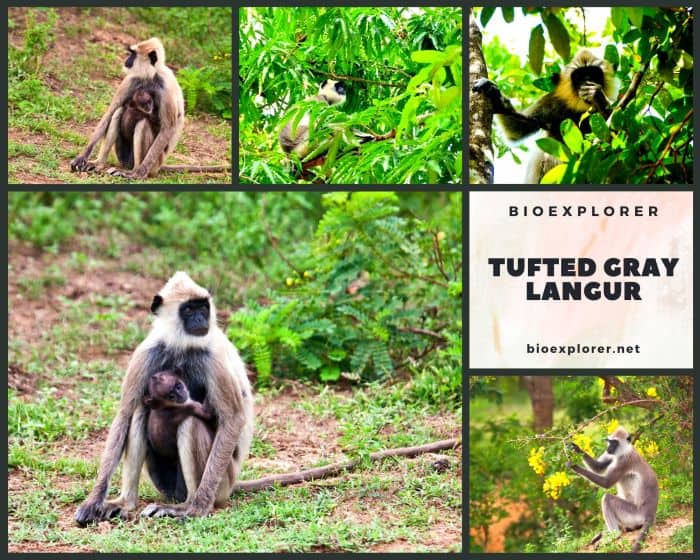
| Animalia | Primates | Cercopithecidae | Semnopithecus | Semnopithecus priam |
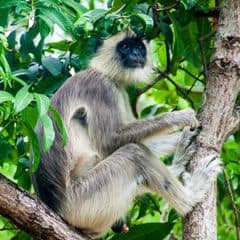

- Common Names: Tufted Gray Langur, Coromandel Sacred Langur
- Taxonomy Classification Year: 1844
- Monkey Size: 55 to 80 cm (22 to 31 in)
- Skin Color(s): Brownish to light gray
- Habitat: Forest
- Diet: Herbivorous
- Native Countries: India, Sri Lanka
Tufted Gray Langur Distribution
Tufted Gray Langur Characteristics
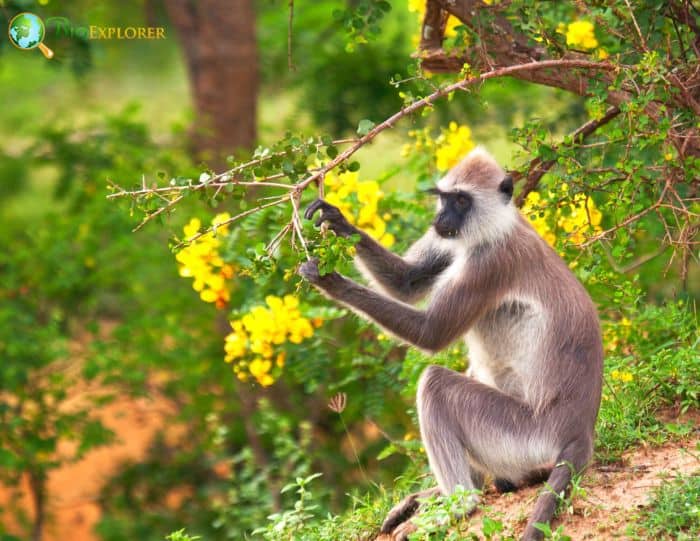
The tufted gray langur[1] (Semnopithecus priam), also called the Coromandel sacred langur and the Madras gray langur, is an Old-World monkey, one of the langur species.
- This, like other gray langurs, is primarily a leaf-eating monkey. It is found in Sri Lanka and Southeast India.
- Tufted gray langurs have a narrow tail that is longer than the rest of their body and hangs high above them.
- Their fur is brown to light gray in color and looks silky. Their heads are off-white, and the crown hair points upwards in a distinct lock that meets a center point, like a miniature mohawk.
- Their faces are dark gray in color, and they have slender ears that protrude from each side of their head.
- Its belly is creamy yellow, and the fur around its feet is light, though its toes are as dark a gray as its face.
What Do Tufted Gray Langurs Eat?
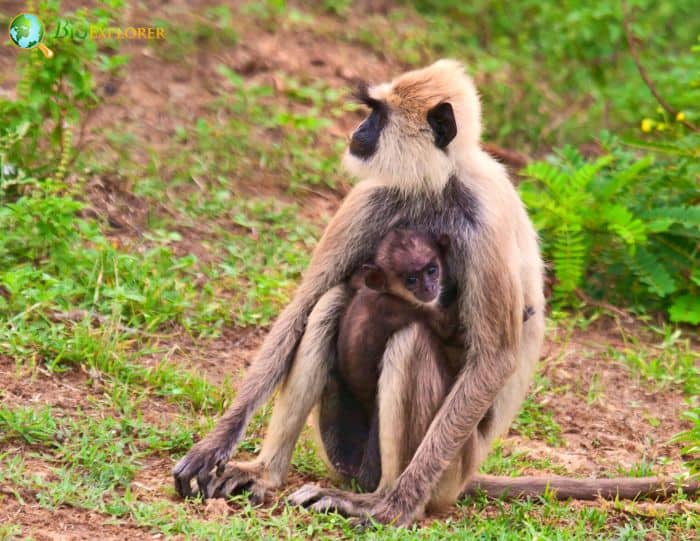
The Tufted Gray Langur consumes several plant matters not limited to[¶]:
- Indian Ash tree (Lannea coromandelica).
- Roxburgh’s Cassia (Cassia roxburghii).
- Clustertree (Ficus racemosa)
- Duhat (Syzygium cumini)
- Lac Tree (Schleichera oleosa).
- Golden Shower (Cassia fistula).
- Mahua (Madhuca longifolia)
- Indian Banyan (Ficus benghalensis).
- Chastetree (Vitex)
- Hazel Sterculia (Sterculia foetida).
- Tamarind (Tamarindus indica)
- Horn Of Plenty (Datura metel).
Tufted Gray Langur Facts
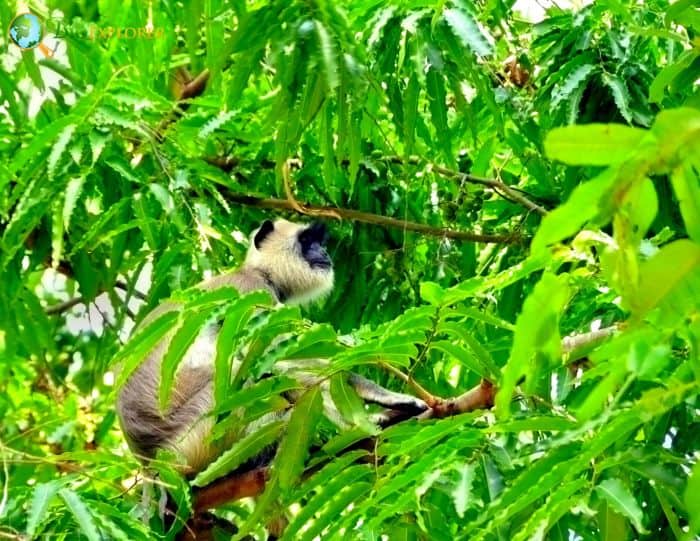
- Tufted gray langurs are one of many species named after characters in Homer’s ancient Greek epic during the Trojan War – The Iliad – Semnopithecus hector and Semnopithecus ajax are the others.
- These langurs are generally shy and only descend when there is no visible danger.
- They move mainly on all fours, both on the ground and in the trees, preferring to run rather than walk.
- Groups can be polygamous or multi-male/multi-female. Their size varies from 20-50 individuals.
- Groups are agonist towards outgroups and exhibit a variety of aggressive behaviors.
Suggested Reading: Different Kinds of Monkeys
Cite This Page
APA7MLA8Chicago
BioExplorer.net. (2025, May 28). Tufted Gray Langur. Bio Explorer. https://www.bioexplorer.net/animals/mammals/monkeys/tufted-gray-langur/.
BioExplorer.net. "Tufted Gray Langur" Bio Explorer, 28 May 2025, https://www.bioexplorer.net/animals/mammals/monkeys/tufted-gray-langur/.
BioExplorer.net. "Tufted Gray Langur" Bio Explorer, May 28 2025. https://www.bioexplorer.net/animals/mammals/monkeys/tufted-gray-langur/.











